Mind maps are one of the most common diagramming tools that help students learn new things about any given topic. The term was first coined by British educational author Tony Buzan, but many historians believe the pictorial method to record the knowledge and model system goes back to the third century B.C.
In the past, mind maps were used only to organize different thoughts, but these days, many educational institutes use them for their students. Over the last couple of years, there has been an advancement in technologies, and several mind map ideas for students have come up that are universally accepted.

In this EdrawMind guide, we will explore 10 mind map ideas for students and recommend the easiest way to create a mind map using the free templates provided by EdrawMind.
In this article
What is a Mind Map
As the name states, a mind map visualizes complex topics that help the students learn and present new information. As we will see in this guide to understanding the mind, map ideas for students, a typical mind map starts with a central concept and branches out into related topics and different ideas.
By accessing different mind map ideas for students, teachers, and other peers can:
- Foster more creative thinking.
- Promotes deep thinking.
- Encourage structured thinking and execution.
Benefits of Mind Map for Students
Mind maps offer a dynamic approach to learning that benefits students across various educational levels. Some of the most common advantages of using mind maps for students are:
- Enhanced Learning: Mind maps for students facilitate better retention of complex subjects.
- Effective Organization: With mind map ideas, students can logically create structured information.
- Improved Memory: Such mind maps encourage improvement in visual memory.
- Better Note-Taking: By creating a mind map, students can streamline and simplify their lectures or textbook notes.
- Problem Solving: With well-structured mind mapping, students can analyze and solve complex problems with ease.
- Collaboration: Mind maps foster brainstorming and improve collaborative approach amongst the students.
- Stress Reduction: Most students face anxiety and stress during exam hours. But by creating mind maps, they can easily break down the topics into subtopics that help reduce information overload.
10 Mind Map Ideas for Students
Mind map ideas for students provide a generic outline to help them visualize different aspects of learning. Some of the most common mind map ideas for students that can be used in real-life scenarios are:
1. Brainstorming
Use mind maps to conduct brainstorming sessions. When you sit around with your peers to brainstorm on any topic or idea, you can start making changes to your mind map. After the brainstorming session, you can visit that mind map to see the important points that were discussed and the decision that was made. Mind maps for brainstorming are considered one of the most important and recommended learning techniques.
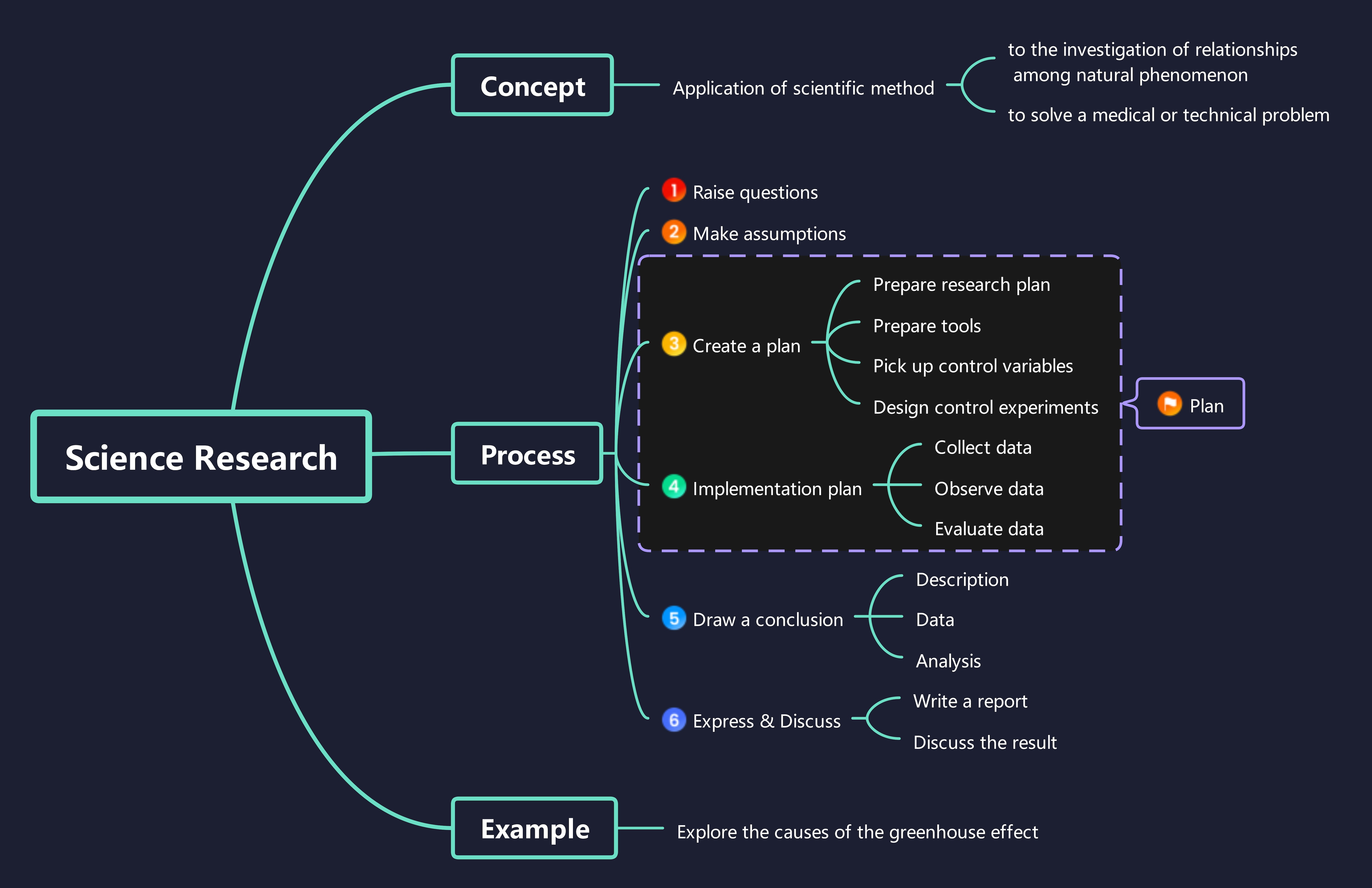
2. Note-Taking
If you are in your class and want to take notes from the lecture, you can create a mind map to visually transform those notes. This way, you can take notes faster, and when you need to revise for tests or assignment submissions, you can easily go through that mind map and quickly recall all the important information that was discussed during the lecture.

3. Essay Writing
Essay Writing is an important exercise that improves the narrative skills and helps the students do research and transform it into meaningful paragraphs. Before you start your research or create an outline, try making a mind map with different topics, like Research, Outline, Points to Add, Connections, and Conclusion. Add different phrases to these particular topics, and you will realize how easy and effective this mind map idea was to write an essay.
4. Lab Reports
If you are in a chemistry or biology lab, you can quickly create a mind map that would address all the important hypotheses, procedures, and experiment results. Such mind maps would be a fun exercise to do and will help the students make elaborate notes at a later stage.
5. Test Revisions
During your studying phase, make a note of all the important points that you think are important and will be discussed during the test. Once the test is near, you can review these mind maps for quick test revisions and recall the major topics.
6. Trip Planning
Make a mind map when you plan a trip. Such trip-planning mind maps would help you create a detailed itinerary. At the same time, you can make easy connections between subtopics to see how well you and your friends can enjoy the trip.

7. New Language
Learning a new language is a fun exercise to improve the cognitive functions of the brain, and with a mind map, you get an easy platform to talk about the intrinsic details that would help you learn a new language. You can create a grammar mind map to improve the grammar of the new foreign language that you are mastering.
8. Time Management
A mind map helps the students to manage their time properly. Create a time management mind map and break down your days and hours. This way, you will learn how much time you have and what time you wish to dedicate to different exercises.
9. Event Planning
You can create a mind map for any school event. Such elaborate event planning mind maps would work as a guide as they will encompass important activities and event details. Try sharing such mind maps with your peers and ask them to put their ideas into it.

10. Creating School Yearbook
School yearbooks are a collection of memorable events of your school life. Use a mind map to create a school yearbook that would include all information about your friends, such as D.O.B., interests, achievements, etc. You can add cliparts and images to make the school yearbook more creative.
Mind Map Example for Students
In the following book analysis mind map, we have broken down the famous book, "The American", into different aspects. Some key factors illustrated in this mind map example for students are main characters, themes, plot summary, connections, and more. Students can use similar mind maps for their book analysis projects. This way, they can easily conduct detailed analysis, and such visually appealing mind maps would help them retain the information about the book for a longer period.
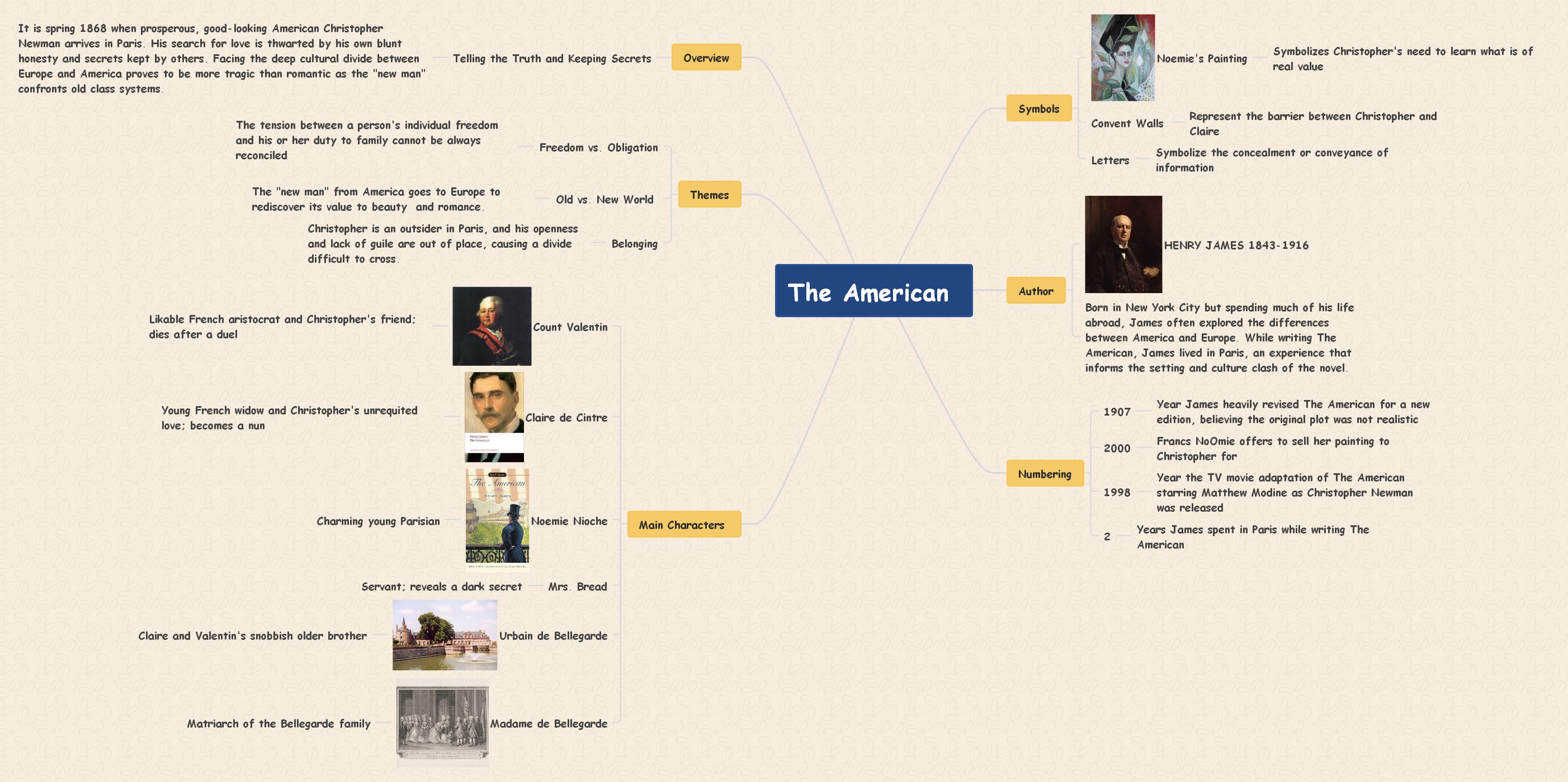
As you saw in this mind map example for students, mind maps provide several tangible benefits for education-related aspects. They can serve as powerful study aids, breaking down complex topics into concise, visually appealing subtopics that make it easier to grasp and remember information. Some of the other benefits of mind map examples for students are:
- It assists in effective study.
- It boosts the overall creativity.
- Mind map examples for students help in literature analysis that helps identify plot structures and character relationships.
How to Make a Mind Map
Creating a mind map for students becomes easier if you go ahead with a tool equipped with all the latest features. EdrawMind is one such mind-mapping software that offers a wide range of features and customization options that help you visualize different mind-map ideas for students.
Quoted from YouTube partner channel
Step 1: Use Templates
EdrawMind comes with MindMap Gallery, which offers mind map templates that are fully customizable. Navigate to the MindMap Gallery from the homepage > search for the required topic or scroll down to see all the latest mind map templates. Once you have finalized the template, click on Duplicate, and the entire template (content, layout, structure, and background) will be imported into your diagramming canvas board.
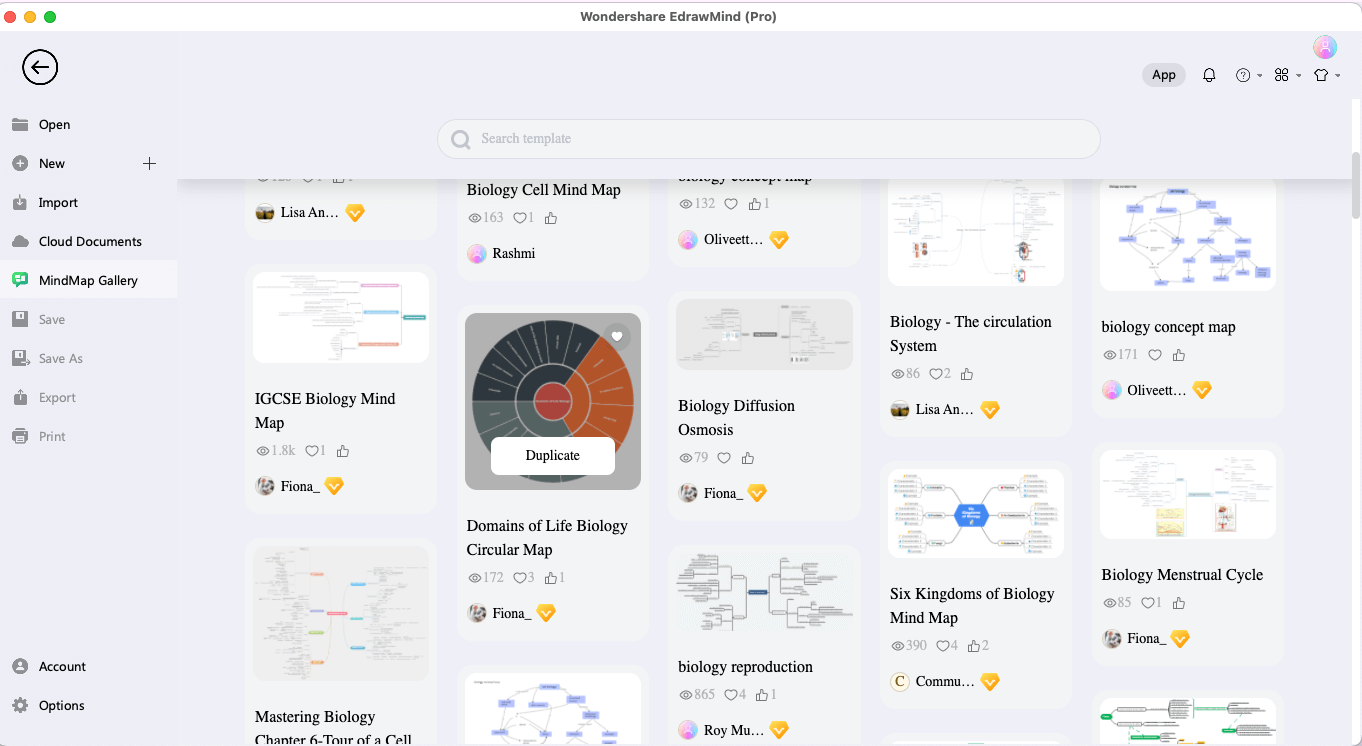
Step 2Add Subtopics
Once in the EdrawMind canvas, you can modify the topics. Based on your Central Theme or Idea, start adding different subtopics that resonate with the topic at hand. With EdrawMind's built-in features, you can add different Floating Topics if you want to explore the Central Theme further.
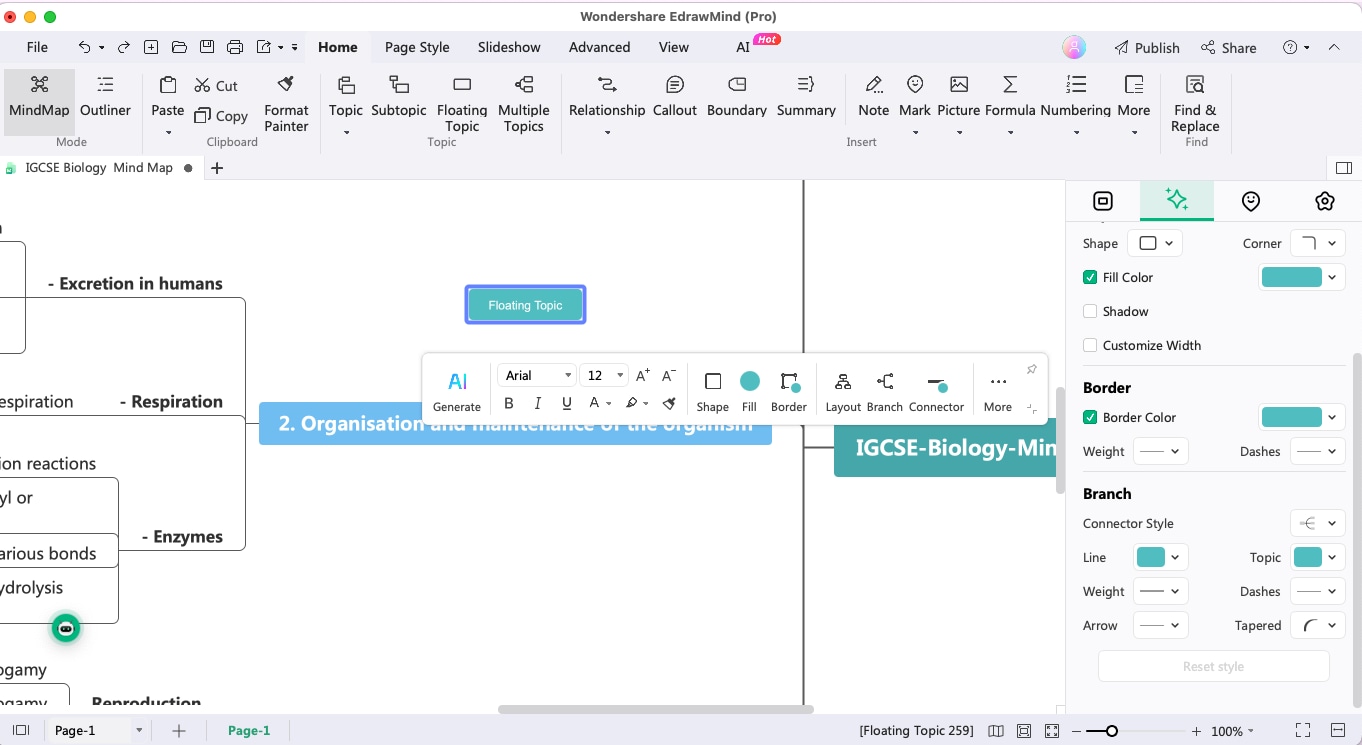
Step 3Add Connections
If, during the brainstorming phase, you realize that there are different subtopics that are interconnected or share some relations, you can easily use the Relationship feature from the topbar and make the desired connection.
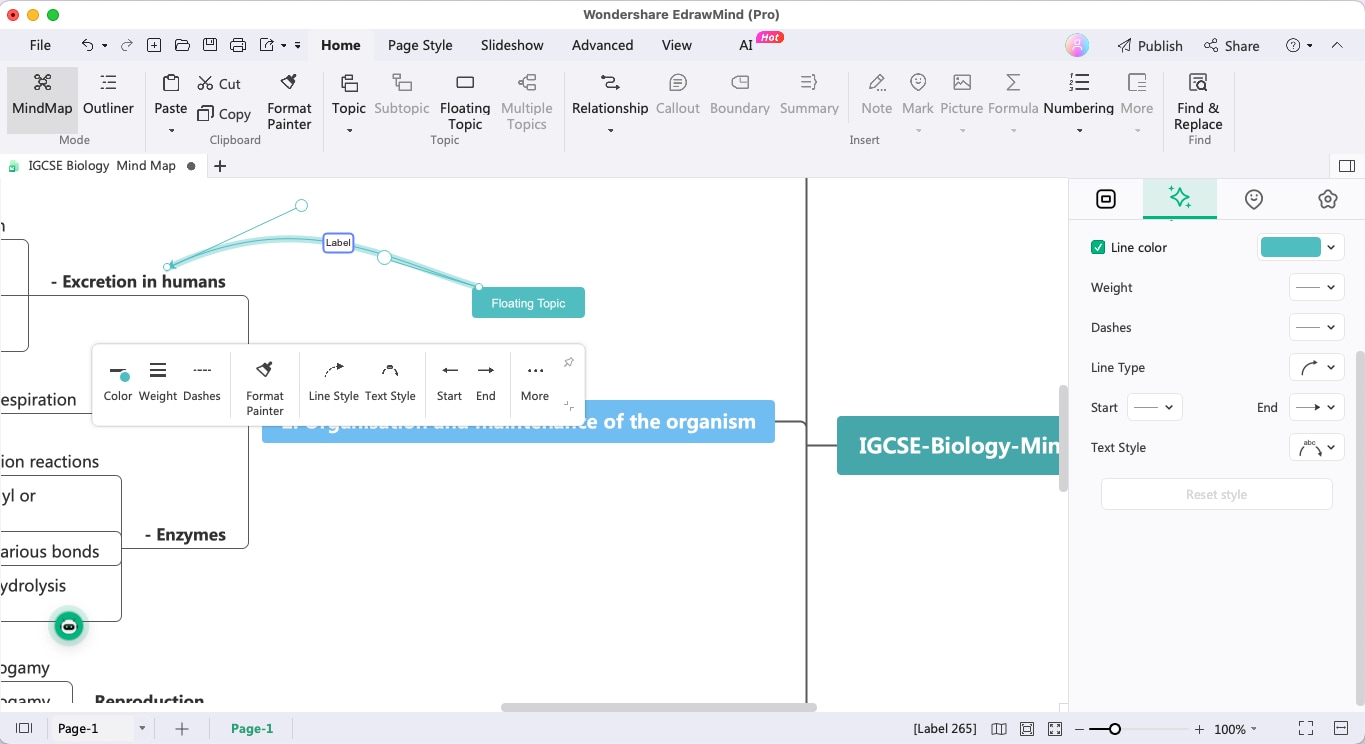
Step 4Customize to Share
After completing the mind map for studies, you can customize it by changing the theme, updating the layout, modifying the fonts and colors, removing and updating the background, importing different images, and more. Once fully customized, you can easily share the mind map using the built-in sharing options.
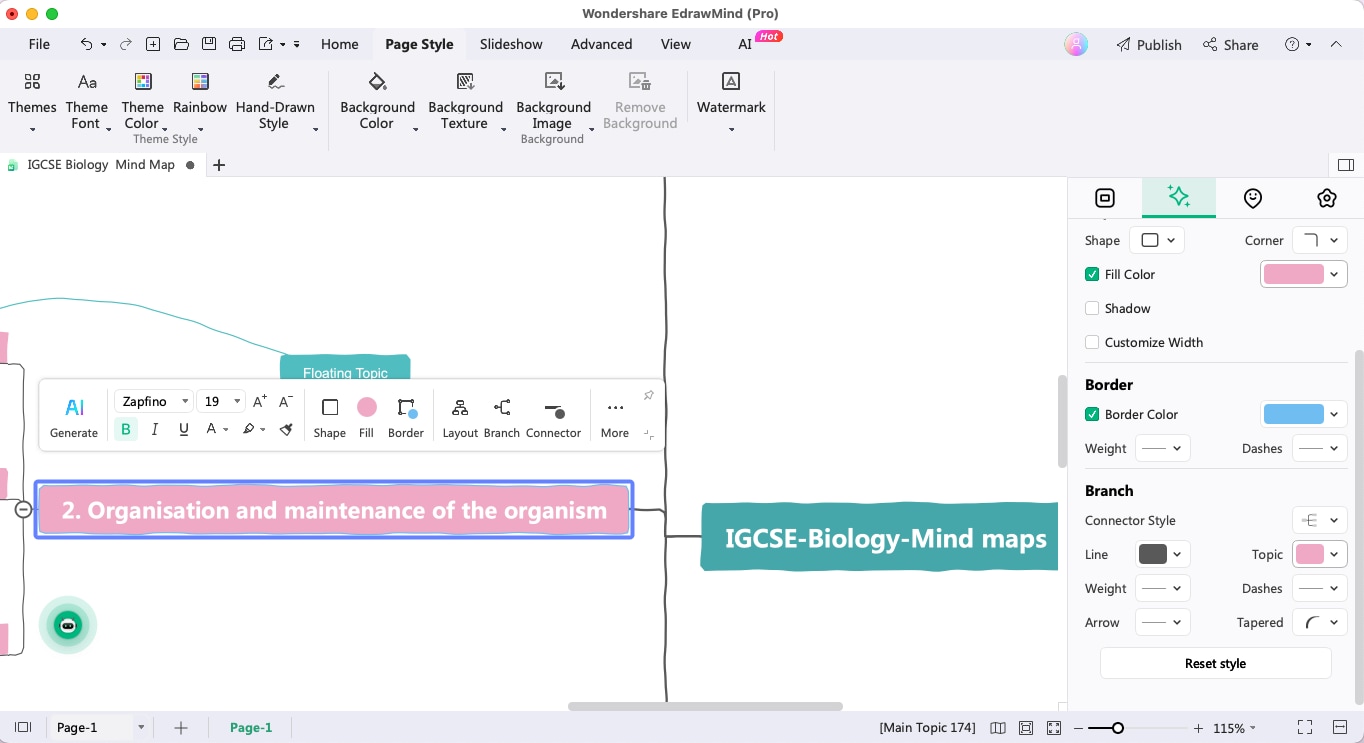
Conclusion
As you saw in this elaborated guide to understanding the mind map ideas for students, these examples and templates provide the initial ground that helps in research. With the right topics in hand, teachers and students can find solutions, organize thoughts, and find new ways to explore a new topic. EdrawMind is a tool that offers premium templates and mind map examples that help students and other professionals. Download this free mind-mapping software today and visualize some amazing mind-map ideas.
FAQ
-
What are the 3 different types of mind maps?
In general, there are three types of mind maps that can be used for any domain:- Library Mind Maps: These are generic mind maps used to organize a large set of information.
- Presentation Mind Map: They are helpful when someone wants to present their ideas to their peers.
- Tunnel Timeline Mind Map: They are used when teams want to organize or make a project plan.
-
What are the basic elements of a mind map?
What are the basic elements of a mind map? -
Where can I find more information about mind mapping?
EdrawMind has a large resource collection dedicated to mind mapping. Within this mind mapping software, you can find all the important articles and guides on how to use mind maps for different scenarios, like project management, brainstorming, education, lifestyle, and more.



